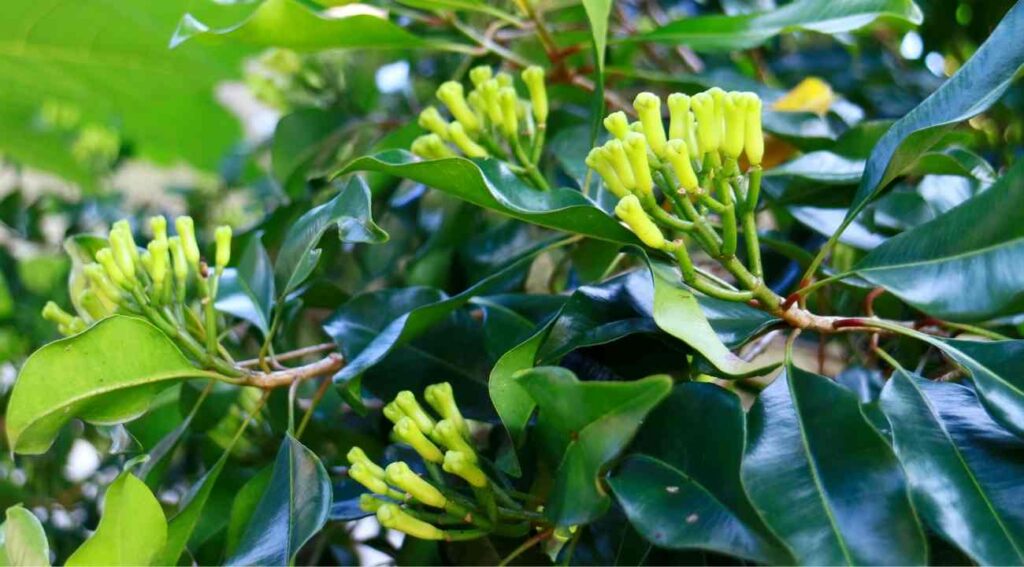Table of Contents
Clove is a well-known spice in many countries around the world. Especially in the Indian subcontinent, people put cloves in many dishes to enhance the flavor of food. Cloves are also found in various spice mixtures around the world, including cinnamon, cardamom, and bay leaves.
The retail price of clove in Bangladesh is 2300 to 2600 taka per kg. Some other similar spices, for example, black pepper and cinnamon, cost roughly Rs 800 per kilogram, while cumin costs around Rs 400 per kg. So the question is, why the price of clove is so much higher than that of these spices?
Overview Of Cloves
According to the University of California, clove is native to the Moluccas Islands. Moluccas islands is an Indonesian archipelago with more than 1,000 islands, but only a few of them produce cloves.
It is speculated that more than 2000 years ago, China used to import cloves from Indonesia. Clove became very popular in Europe from the 7th century. According to the Mccormick science institute, cloves were one of the main ingredients in the European spice trade at that time.
The Portuguese first came to Moluccas Islands in 1514 and the Dutch in 1605 to trade cloves. From then until about 1800, the Dutch maintained a monopoly on the clove business by removing any clove trees that were not under their authority. Even if someone planted a clove tree without their authorization, he was often executed. In 1770, a Frenchman named Pierre was able to smuggle clove seeds from the Dutch-controlled Moluccas Islands.
As a result, clove cultivation started in different colonies of France, including Zanzibar. As a result, the Dutch monopoly over clove cultivation came to an end in 1800. Places like Zanzibar, Madagascar, Sri Lanka, and Mauritius produce some amount of clove, but the majority of cloves are grown in Indonesia. According to Tridge, Indonesia was the top producer in 2019, with more than 134,000 metric tons of cloves.
There are many uses for this fragrant clove. In Asia, Africa, and the Mediterranean, clove is used in a variety of salty and sweet dishes. Moreover, clove is also found in Ayurvedic medicine, menthol, fragrances, toothpaste, soaps, cosmetics, and certain cigarettes.
Why So Expensive?

Limited Cultivable Land
The climate and soil are very important for clove cultivation. Clove grows well in a warm, humid climate with temperatures ranging from 20 to 30 degrees Celsius, yearly rainfall of 150 to 250 cm, and 1500 meters above sea level. Besides, deep black loam soil is quite suitable for clove cultivation.
However, cloves cannot be cultivated in sandy soil. This is why cloves are only grown in a few parts of the world. Everyone has to rely on the limited production of cloves available only in those specific places. Consequently, one of the factors contributing to the high price of cloves is the inability to increase its production.
Time Consuming & Risky Cultivation Process
The clove cultivation process is quite time-consuming. It’s because it takes about 20 years for a tree of this species to reach maturity. The plant, however, continued to produce cloves for more than 80 years. However, even during this time, the production of cloves is very low.
Because a tree can produce only 3 kg of cloves per year. Besides, a clove tree can be damaged for various reasons even before it matures. For example, clove trees can be easily damaged due to bad weather. Since there is a chance that your clove tree might get damaged after planting, it is not possible for many people to wait so long as during these 20 years, no income will come from these trees. His whole effort and expense will be lost if the tree is damaged again. So despite the price, clove cultivation does not increase much.
Labor Intensive Harvesting & Low Yield
After production, many commercial crops are now harvested using a variety of harvesters machines. In some cases, harvester machines are employed even in Bangladesh. But there is no opportunity to use such a machine in terms of collecting cloves. The clove flower has to be collected before it changes to a dark red color and before the flower size reaches 2 cm. So clove has to be collected carefully and selectively by hand.
This process is pretty time-consuming. Again, because one person can only gather a very limited amount of cloves in time, it needs a large number of people to collect at the right moment before the color of the flower changes. Due to this reason, the price of cloves goes up a lot.
After collecting these cloves, they are brought for drying. Cloves are usually dried with an artificial dryer or in sunlight. Cloves usually become light brown in color after drying. The weight of cloves reduces by about one-third after proper drying. 11 to 15 thousand dried cloves weigh only 1 kg. Its price goes up further to cover its cost. However, the number of cloves acquired by paying a lot of money is reduced even further. Then the price goes up to cover its cost.
Supply & Demand
According to the Food and Agricultural Organization of the United Nations (FAO), worldwide production of cloves in 2015 was about 184,000 metric tons (184,250). But in 2019, this production decreased to 181 thousand metric tons (181,788). During this period, production increased for a few years and decreased again for a few years. In other words, clove production stays more or less the same.
On the other hand, according to Technavio, between 2019 and 2023, the global market size of cloves will grow at a rate of 5 percent per year and exceed 366 million. Even though the clove production rate is the same, the price of cloves goes up as demand increases day by day. If this trend continues, then the price of cloves may go up further in the future.










Leave a Comment